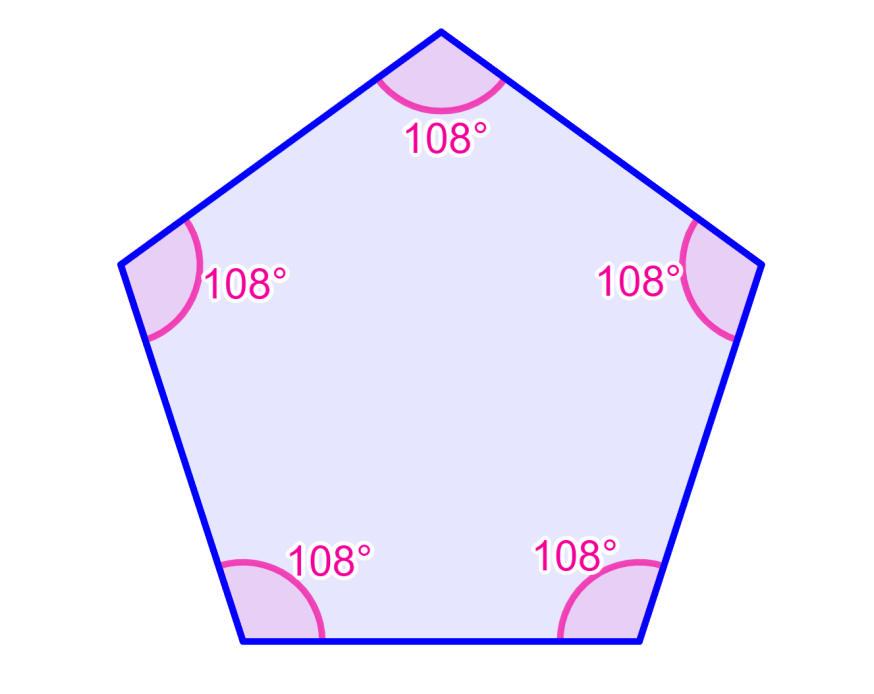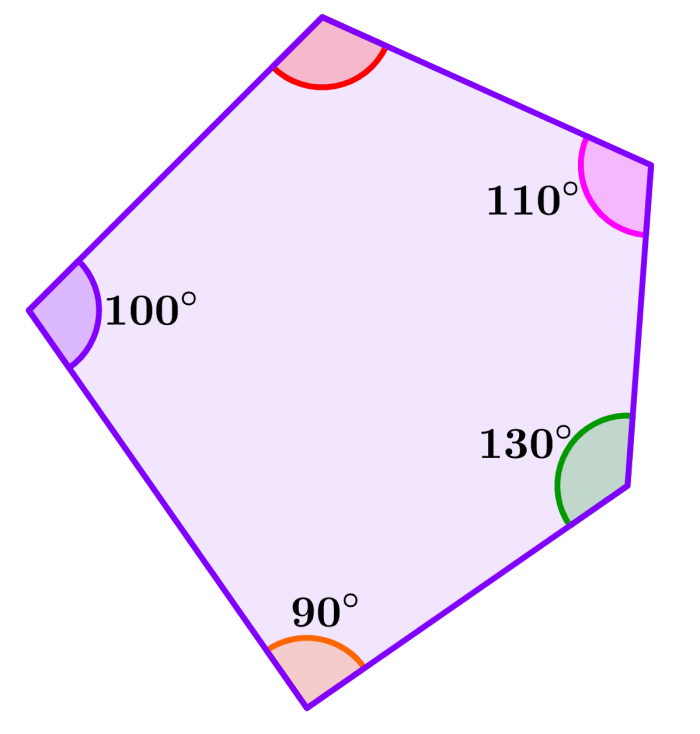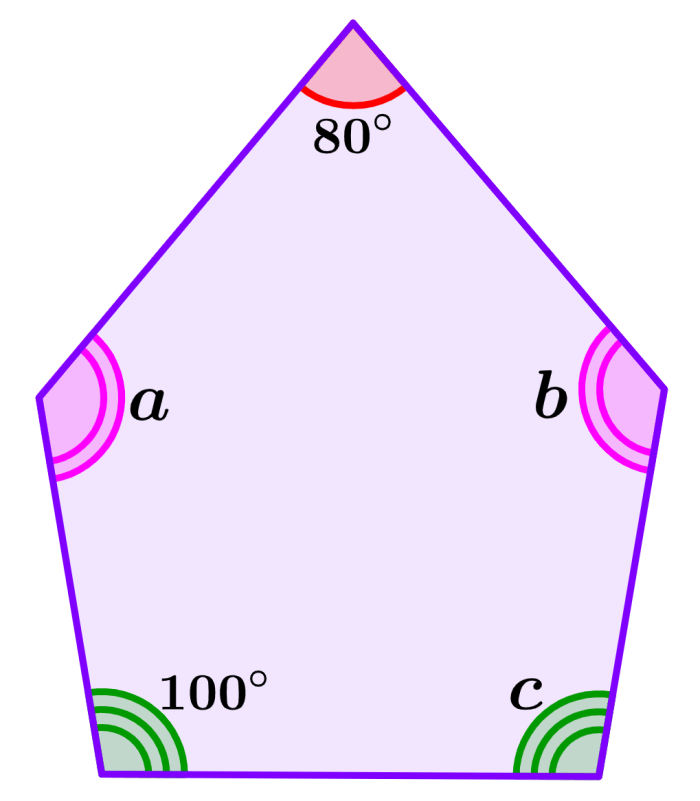Pentagons have a sum of interior angles of 540°. Therefore, in the case of regular pentagons, each interior angle measures 108°. Irregular pentagons have angles of different measures, but their sum is always equal to 540°.
Here, we will learn more about the interior angles of a pentagon. We will learn about the formula for internal angles and we will solve some exercises.
Sum of interior angles of a pentagon
The sum of all the interior angles of any pentagon is always equal to 540°. This applies regardless of whether the pentagon is regular or irregular. This sum is obtained by applying the polygon angle sum formula:
| $latex (n-2)\times 180$° |
where, n is the number of sides of the polygon. In the case of a pentagon, we have $latex n = 5$. Therefore, using the formula:
$latex (n-2)\times 180$°
$latex =(5-2)\times 180$°
$latex =(3)\times 180$°
$latex =540$°
In turn, this formula is obtained considering that we can divide any polygon into triangles as in the following diagram:

For any polygon, we can form a total of n-2 triangles. Also, we know that each triangle has a sum of interior angles of 180°, so $latex (n-2) \times 180$° corresponds to the sum of the interior angles of the polygon.
How to find a missing angle in a pentagon?
If the pentagon is regular, we know that all its sides have the same measure. Therefore, we can determine the measures of each interior angle simply by dividing the total sum by 5. Therefore, we have:
540°÷5 = 108°
The measure of each internal angle in a regular pentagon is equal to 108°.

In the case of irregular pentagons, the measures of their interior angles are different from each other. Therefore, to find the measure of some missing angle, we need to know the measures of the other angles.
For example, if we know that a pentagon has the angles 110°, 100°, 120°, and 90°, we can find the measure of the fifth angle by adding the known angles and subtracting from 540°. Therefore, we have:
110°+100°+120°+90° = 420°
⇒ 540°-420° = 120°
The measure of the missing angle is 120°.
Solved examples of interior angles of a pentagon
EXAMPLE 1
Find the missing angles in the pentagon below.

Solution: In this case, we have the angles 90°, 100°, 130°, and 110°. Therefore, we start by adding them:
90°+100°+130°+110° = 430°
Now, we subtract this from 540° to find the missing angle:
540°-430° = 110°
The missing angle measures 110°.
EXAMPLE 2
Determine the measure of the missing angle in the pentagon below.

Solution: We know that the sum of all the interior angles of a pentagon is equal to 540°. Therefore, we have to add all the known angles and subtract from 540°:
80°+120°+100°+110° = 410°
⇒ 540°-410° = 130°
The measure of the missing angle is 130°.
EXAMPLE 3
Now let’s look at an example where we have to find more than one missing angle. Here, angles that are different are marked differently. For example, angles that have a double line are equal.

Solution: Since the angles that have double lines are equal, we have a=120°.
Furthermore, we also know that angles b and c are equal since they both have triple lines. To find the measure of these angles, we start by adding the angles that we know so far:
90°+120°+120° = 330°
Now, we subtract this from 540° to find the missing angles:
540°-330° = 210°
Since the two missing angles are equal, we divide 210° by 2 to get the measure of each. Therefore, we have b=105° and c=105°.
EXAMPLE 4
Find the missing angles in the pentagon below.

Solution: Angles that have triple lines have the same measure. Therefore, we have c=100°.
Angles a and b also have the same measure since they both have double lines. To find its measure, we have to start by adding the known angles:
80°+100°+100° = 280°
Now, we subtract this from 540° and we have:
540°-280° = 260°
Since the angles a and b are the same, we divide the result by 2 and we have a=130° and b=130°.
See also
Interested in learning more about angles of a pentagon and other polygons? Take a look at these pages:



